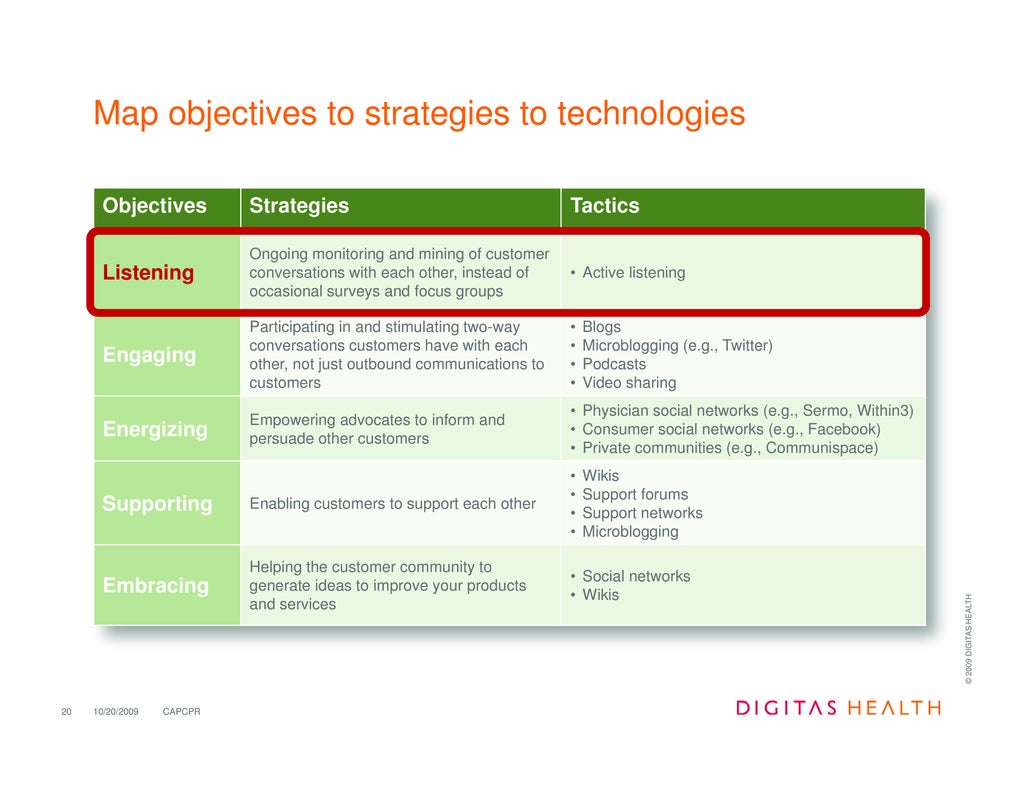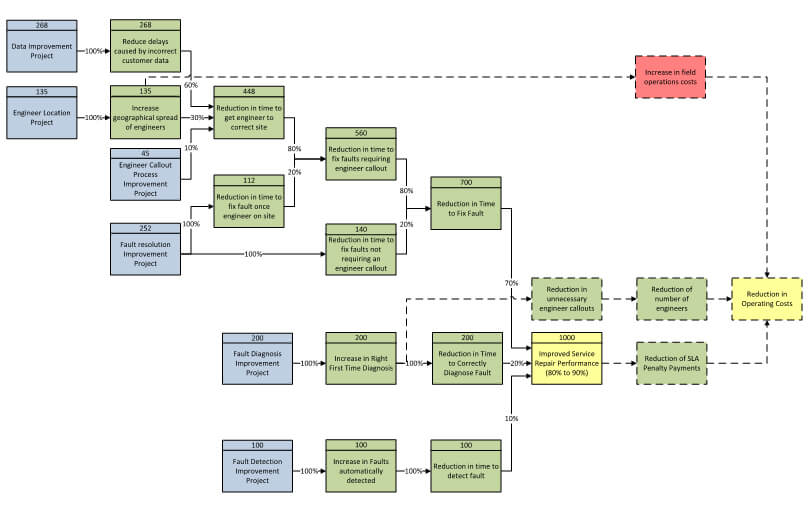What is an Objective Map and Why is it Important?
An objective map is a visual representation of a person’s or organization’s goals and the steps required to achieve them. It is a powerful tool that helps individuals and teams structure their objectives, prioritize tasks, and track progress. By creating an objective map, you can clearly define your goals, establish measurable milestones, and allocate resources effectively, ultimately increasing productivity and maximizing the chances of success.
Key Elements of an Effective Objective Map
An effective objective map consists of several essential components that contribute to its overall success. These elements include:
- Clear Objectives: Clearly define your objectives, ensuring they are specific, relevant, and aligned with your broader vision. Avoid ambiguity and make sure each objective is easily understood.
- Measurable Progress: Establish measurable milestones that allow you to track progress effectively. Quantifiable targets help you maintain focus and motivation, ensuring you stay on track towards achieving your objectives.
- Realistic Deadlines: Set realistic and achievable deadlines for each milestone. Deadlines create a sense of urgency and encourage consistent effort, but they should be flexible enough to accommodate unforeseen challenges or changes in priorities.
- Prioritization: Rank your objectives based on their importance and urgency. This will help you allocate resources efficiently and focus on the tasks that will have the most significant impact on your overall success.
- Resources and Skills: Identify the necessary resources and skills required to achieve your objectives. Ensure you have access to the required tools, knowledge, and expertise before embarking on your objective map journey.
- Review and Adjustment: Regularly review your objective map and make adjustments as needed. Life is unpredictable, and your objectives may change over time. Be prepared to adapt your map to reflect new priorities or circumstances.
How to Create an Objective Map: A Step-by-Step Guide
Creating an objective map can be a straightforward and rewarding process. Follow these steps to build your own:
- Define Your Vision: Start by establishing a clear vision of what you want to achieve. This vision should be broad and inspiring, providing direction and purpose for your objective map.
- Set SMART Goals: Create specific, measurable, achievable, relevant, and time-bound (SMART) goals that align with your vision. Break down larger objectives into smaller, manageable tasks with clear deadlines.
- Identify Resources and Skills: Determine the resources and skills required to achieve your goals. Ensure you have access to the necessary tools, knowledge, and expertise before proceeding.
- Establish Milestones: Define measurable milestones for each goal, allowing you to track progress effectively. These milestones should be specific, achievable, and aligned with your SMART goals.
- Prioritize and Schedule: Rank your goals based on their importance and urgency. Allocate resources and set realistic deadlines for each milestone, ensuring you maintain a balanced and manageable workload.
- Create Your Objective Map: Use a visual tool, such as a mind map or Gantt chart, to create your objective map. Include all goals, milestones, deadlines, and resources in a clear and organized manner.
- Review and Adjust: Regularly review your objective map and make adjustments as needed. Life is unpredictable, and your objectives may change over time. Be prepared to adapt your map to reflect new priorities or circumstances.
Using Objective Maps for Personal and Professional Growth
Objective maps are versatile tools that can be applied to various aspects of life, offering numerous benefits for personal and professional growth. Here are some ways to leverage objective maps in different areas:
- Career Development: Objective maps can help you set clear career goals, identify skill gaps, and plan professional development activities. By tracking progress and adjusting your map as needed, you can ensure steady growth and advancement in your chosen field.
- Personal Relationships: Use objective maps to strengthen personal relationships by setting communication, trust, and empathy goals. By visualizing your objectives and tracking progress, you can foster healthier and more fulfilling connections with loved ones.
- Health and Wellness: Objective maps can support your health and wellness journey by setting specific fitness, nutrition, and self-care goals. By monitoring your progress and making adjustments, you can maintain a balanced and healthy lifestyle.
- Financial Management: Objective maps can assist in managing your finances by setting savings, investment, and debt repayment goals. By tracking your financial progress, you can make informed decisions and work towards financial stability and independence.
- Skill Acquisition: Objective maps can help you learn new skills or hobbies by setting specific learning objectives, allocating resources, and tracking your progress. By breaking down complex tasks into manageable milestones, you can make steady progress and achieve your desired outcomes.
Real-Life Examples of Objective Maps in Action
Objective maps have been successfully implemented by numerous individuals and organizations to achieve their goals and increase productivity. Here are some inspiring and practical examples:
- Career Advancement: A project manager at a tech company used an objective map to advance her career by setting clear goals for skill development, networking, and project completion. By tracking her progress and making adjustments, she secured a promotion within six months.
- Health and Wellness: A busy entrepreneur created an objective map to improve his health and well-being. By setting specific fitness, nutrition, and self-care goals, he was able to lose weight, reduce stress, and increase his overall energy levels, leading to improved performance at work.
- Financial Management: A young couple used an objective map to manage their finances more effectively. By setting savings, investment, and debt repayment goals, they were able to purchase their first home within two years, significantly improving their quality of life.
- Non-Profit Organizations: A non-profit organization used objective mapping to streamline its operations and increase fundraising efforts. By setting clear objectives, measurable milestones, and realistic deadlines, the organization was able to expand its programs and positively impact more lives.
- Educational Institutions: A university used objective mapping to improve student outcomes by setting specific learning objectives, tracking progress, and adjusting as needed. As a result, graduation rates and student satisfaction increased, leading to a more positive reputation for the institution.
Common Mistakes to Avoid When Creating an Objective Map
Creating an effective objective map requires careful planning and execution. Here are some common mistakes to avoid to ensure your objective map is successful:
- Unclear Objectives: Ensure your objectives are specific, measurable, achievable, relevant, and time-bound (SMART). Vague or ambiguous goals can lead to confusion and decreased productivity.
- Lack of Measurable Progress: Without measurable milestones, it can be challenging to track progress and maintain motivation. Include quantifiable targets in your objective map to monitor your development effectively.
- Unrealistic Deadlines: Setting unrealistic deadlines can lead to stress, burnout, and decreased productivity. Be honest about the time required to complete each task and allocate resources accordingly.
- Overcomplicating the Process: An objective map should be a simple, easy-to-understand tool. Avoid overcomplicating the process with unnecessary details or complex visuals.
- Ignoring Adjustments: Life is unpredictable, and your objectives may change over time. Be prepared to adapt your objective map to reflect new priorities or circumstances.
- Lack of Accountability: Without accountability, it can be challenging to maintain focus and drive. Share your objective map with a trusted friend, mentor, or colleague to ensure you remain accountable for your progress.
Maximizing the Benefits of Objective Mapping: Best Practices and Strategies
To get the most out of objective mapping, follow these best practices and strategies:
- Collaboration: Collaborate with others when creating your objective map. Sharing ideas and insights can lead to more innovative and effective goal-setting. Additionally, involving team members or stakeholders can increase buy-in and commitment to the objectives.
- Motivation: Keep your motivation high by regularly reviewing your progress and celebrating milestones. Visualizing your success can also help maintain drive and focus.
- Continuous Improvement: Regularly assess your objective map and make improvements as needed. Continuous improvement ensures your objectives remain relevant and aligned with your overall vision.
- Flexibility: Be prepared to adapt your objective map to reflect new priorities or circumstances. Flexibility is crucial for long-term success and maintaining focus on your objectives.
- Integration with Other Tools: Consider integrating your objective map with other tools, such as project management software or calendar applications, to streamline your workflow and improve productivity.
- Regular Reviews: Schedule regular reviews of your objective map to ensure you stay on track and make adjustments as needed. Monthly or quarterly reviews can help maintain focus and drive.
Staying Accountable and Motivated with Objective Maps
Objective mapping can significantly improve accountability and motivation when pursuing your goals. Here’s how:
- Visualizing Progress: Objective maps allow you to see your progress visually, which can be incredibly motivating. Watching your milestones being achieved and your objectives coming closer to fruition can boost your drive and determination.
- Increased Accountability: Sharing your objective map with others, such as colleagues, friends, or family members, can increase accountability. Knowing that others are aware of your goals and can monitor your progress can help maintain focus and commitment.
- Regular Reviews: Regularly reviewing your objective map ensures that you stay on track and address any issues promptly. Consistent reviews also help maintain motivation by reinforcing your commitment to your objectives.
- Adjustments and Flexibility: Objective mapping allows for adjustments and flexibility, which can help maintain motivation. If you encounter obstacles or changes in priorities, you can adapt your objective map accordingly, ensuring that you remain focused and driven.





